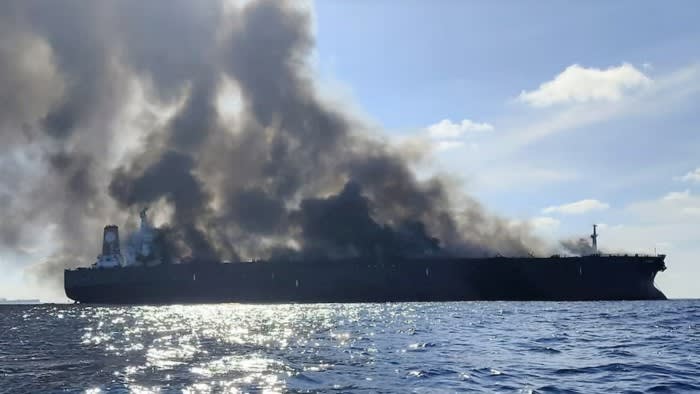Stay informed with free updates
Simply sign up to the War in Ukraine myFT Digest — delivered directly to your inbox.
Russia has expanded the capacity of its shadow fleet of oil tankers by almost 70 per cent year-on-year despite a recent crackdown on insurers and shipping companies enabling Moscow to circumvent western sanctions, new research has shown.
The volume of Russian oil transported by poorly maintained and underinsured tankers has increased from 2.4mn barrels per day in June 2023 to 4.1mn in June 2024, according to a report published by the Kyiv School of Economics (KSE) on Monday.
The trend comes as the US, Canada, Japan and European allies increasingly targeted global insurers and ship owners in a bid to crack down on Moscow’s ability to generate revenues for its war in Ukraine. They also added to the sanctions list companies and individual vessels associated with the Russian shadow fleet.
“Sanctions on tankers have been quite effective but the designation campaign has been too limited to actually rein in Russia’s shadow fleet,” said Benjamin Hilgenstock, one of the authors of the KSE report.
He added that sanctions should be used “systematically” to enforce a requirement for adequate oil spill insurance and, thereby, “address the serious and urgent environmental threat stemming from the shadow fleet”.
Many of these vessels regularly navigate busy European waters, including the Baltic Sea, the Danish Straits and the Strait of Gibraltar, increasing the risk of environmental disasters for the EU and neighbouring countries.
KSE proposes the establishment of “shadow-free” zones in European waters to mitigate those risks. Otherwise a disaster is just “waiting to happen on Europe’s doorstep,” the report argues. “The weak link in the regulatory framework, together with the dramatically expanded role of shadow tankers in the Russian oil trade, means that a major environmental disaster is only a question of time.”
In June 2024, 70 per cent of Russia’s seaborne oil was transported by the shadow fleet, which Russia is estimated to have spent $10bn assembling, according to the KSE. This included 89 per cent of Russia’s total crude oil shipments, most of which traded above the $60 per barrel price cap since mid-2023, and 38 per cent of Russia’s oil product exports.
By assembling this fleet, Moscow severed ties with price cap coalition countries that pressured global insurance companies to comply with the sanctions regime, reducing Russia’s options to primarily domestic insurers.
This raised significant concerns about such coverage’s quality, reliability, and scope. The combination of the tankers’ age — which averages 18 years — and lack of adequate insurance makes these vessels extremely hazardous, the KSE report argues.
The risks are further heightened by the fleet’s use of grey-listed flag states anonymous ownership structures. They often include multiple intermediaries such as British accountants and Dubai-based companies hidden through layers of corporate entities, the FT’s recent investigation found.
KSE report authors argued that in the event of trouble, European states could face clean-up costs running into billions of euros.
Several accidents involving shadow ships associated with Russia have already occurred. This March, a 15-year-old shadow tanker Andromeda Star collided with another vessel near Denmark. No oil was spilt as it was on the way to Russia, unloaded.
Over the past two years, four Russian shadow fleet vessels have lost engine power, including incidents in the Dardanelles and the Danish Straits.
Shadow fleet vessels used to carry oil from other sanctioned sellers also experienced engine breakdowns, highlighting maintenance issues and explosions. In May 2023, a 27-year-old Gabon-flagged ship with 700,000 barrels capacity used to transport Iranian oil suffered a large explosion near Indonesia. It was empty at the time.
Several shadow fleet vessels have been involved in oil spills, with some fleeing the scene after causing environmental damage. In 2019, the 23-year-old Ceres I, previously involved in the Iran oil trade, collided with another tanker near Singapore, turned off its signal, and tried to flee before being caught by Malaysia’s coastguard.
https://www.ft.com/content/fbad4462-5ed8-4f75-80d7-79459607277c


